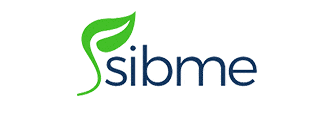Personalized Virtual Coaching
The Best Way to Help Teachers Grow
Build Better Boats
A while back, I was reading Resilience: Why Things Bounce Back when I came upon this sentence: “If we cannot control the volatile tides of change, we can learn to build better boats.” As a person who has been involved for more than a decade in teacher preparation and in on-the-job coaching of teachers, I saw an immediate connection between building “better boats” in the context of the book and doing a better job of preparing and coaching teachers for the “volatile tides of change” within our profession.
I have, in effect, spent the last 15 years of my career trying to “build better boats” in terms of teacher preparation for one reason: teacher effectiveness directly impacts student achievement. Over the years, I have learned some pretty important lessons about what works, and what doesn’t work, in terms of helping teachers to grow. Here is some of what I have learned.
What Doesn’t Work?
For the thirty-five years I have been an educator, the template for professional development has remained, essentially, the same:
- Others Know Best – The professional learning provided for both veteran and beginning teachers is dictated to them by well-meaning others.
- Learn and Return – Teachers are sent away to a conference and expected to return to first implement then share what they learned with others.
- Sit and Get – Speakers are brought to the school to deliver a well-researched six-hour message to the entire faculty. There is no direction for implementation after they leave and no follow up with the campus.
When administrators follow these models, they rarely see the level of implementation of the new information or strategies that they had hoped (or paid) for.
About three years ago, I read an article in the Houston Chronicle about an educational start-up company named Sibme—Seeing is Believing Me. Within 48 hours I had my first meeting with Dave Wakefield, co-founder of Sibme. At the time, I was working as an educational consultant—which often involved me going in to schools to work with and coach struggling teachers. I was looking for better tools to do that and Sibme offered the ability to easily film, store, and collaborate privately using their platform. I became a customer—one of their first, I am sure!
Over the past three years, I have used Sibme in a number of ways, but my favorite is to use Sibme as a hybrid approach to virtual coaching–the most effective way that I know of to help teachers who want to grow! I find it so effective that I have joined forces with Sibme as the Director of Virtual Coaching.
How Does Sibme’s Virtual Coaching Service Work?
Once Sibme is contracted by a teacher who needs support in addition to what the school can provide or by an administrator seeking additional support for a teacher, a six-week coaching cycle is launched using a hybrid approach
What Makes Sibme’s Virtual Coaching Effective?
By combining the Sibme platform, which allows teachers to film, share, and receive specific feedback, with the use of personalized web-conferences, highly skilled and experienced virtual coaches are able to customize a teacher’s learning experience by focusing on achievable goals in areas that, when improved, will have an impact on student achievement.
The Volatile Tides of Change
The quote that so impacted me from Resilience: Why Things Bounce Back, reminds me of what Stephen Covey calls the circle of influence. “Proactive people,” Covey said, “work on the things they can do something about.”
Although I cannot control the “volatile tides of change” in relation to teaching, I believe that Sibme provides both the coach and teacher with the necessary tools to build better boats.
Allyson Burnett – Director of Virtual Coaching for Sibme
Allyson J. Burnett is an author, a consultant, a facilitator, and a trainer specializing in developing a school-wide interdisciplinary approach to meet the Common Core Standards for literacy at the secondary level.


